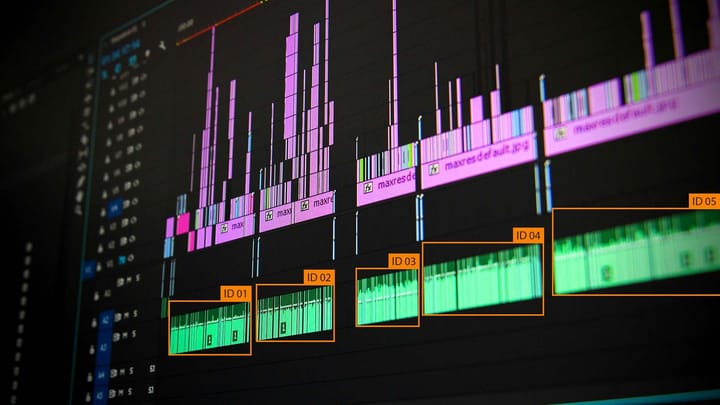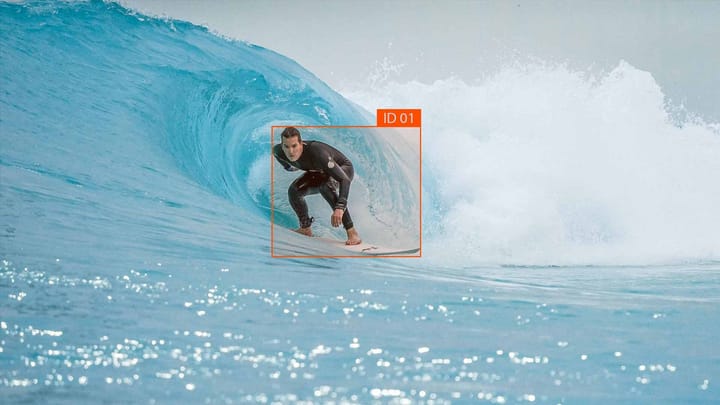Customizing Your Annotation Experience with CVAT Features

CVAT is a powerful open-source image and video annotation tool that offers a wide range of customization features to enhance your annotation experience. With CVAT, you have the flexibility to personalize the platform and tailor it to your specific needs, whether it's custom tools, personalization options, or feature customization.
CVAT provides various customization features that allow you to create a seamless data labeling process. You can customize the platform by adding custom tools that cater to your unique requirements. Whether you need specific annotation tools or additional functionalities, CVAT enables you to build a customized annotation platform to suit your preferences.
In addition to custom tools, CVAT offers personalization options that allow you to configure the platform based on your labeling preferences. You can choose the annotation formats that best meet your needs and easily switch between different formats for different tasks.
Furthermore, CVAT allows for feature customization, enabling you to modify and adapt the platform to match your annotation workflow. By customizing CVAT, you can streamline your annotation process and enhance your efficiency, resulting in more accurate and effective model training.
Key Takeaways:
- CVAT offers a range of customization features to personalize your annotation platform.
- Custom tools in CVAT allow you to tailor the platform to your specific requirements.
- CVAT provides personalization options, including different annotation formats.
- Feature customization in CVAT enhances your annotation workflow and efficiency.
- By customizing CVAT, you can create a more accurate and effective model training process.
What is CVAT?
CVAT, short for Computer Vision Annotation Tool, is an open-source image and video annotation tool developed by Intel. It is widely used in the computer vision field for labeling data used in deep learning models. CVAT supports multiple annotation formats and can be used online or installed locally on a user's machine. It is a versatile tool that allows users to label their data for various computer vision tasks such as object detection, image classification, and semantic segmentation.
Getting Started with CVAT
Users can get started with CVAT by either using the online version on the CVAT website or by installing it locally on their machine. The CVAT website provides a user-friendly interface where users can create a labeling task, upload their raw data, and configure the annotation settings. Users can also choose from multiple annotation formats to suit their specific needs. For those who prefer a local installation, CVAT provides detailed instructions on how to set it up on various operating systems.
Using CVAT Website for Online Annotation
The CVAT website offers an intuitive and accessible platform for online annotation. Here, users can seamlessly perform labeling tasks without the need for local installation. The CVAT website allows users to create labeling tasks and upload their raw data with ease. The user-friendly interface enables efficient configuration of annotation settings, making it simple to customize the annotation process according to specific requirements. Whether you're working with images or videos, the CVAT website provides a streamlined experience for online annotation.
Local Installation for Flexibility and Control
For users who prefer a local installation, CVAT offers the option to set up the tool directly on their machine. This provides additional flexibility and control over the annotation process. By installing CVAT locally, users can work with their raw data and perform labeling tasks without relying on an internet connection. Local installation ensures data privacy and enables customization of the annotation workflow to suit individual preferences.
Multiple Annotation Formats to Choose From
CVAT supports various annotation formats, allowing users to select the most suitable format for their specific labeling task. Whether it's bounding boxes, polylines, polygons, or semantic segmentation masks, CVAT offers a wide range of annotation options. This flexibility ensures that users can annotate their raw data accurately and precisely, regardless of the annotation format required for their computer vision project.
"CVAT's diverse annotation formats enable users to annotate their data with precision and accuracy, supporting a wide range of computer vision tasks."
Comparison of Annotation Formats
| Annotation Format | Use Case | Advantages |
|---|---|---|
| Bounding Boxes | Object detection | Quick and simple annotation for identifying objects |
| Polylines | Object tracking | Accurate annotation of object trajectories |
| Polygons | Shape recognition | Precise annotation for complex shapes and contours |
| Semantic Segmentation Masks | Image segmentation | Fine-grained annotation for pixel-level recognition |
By offering multiple annotation formats, CVAT ensures that users have the flexibility to annotate their raw data in the most appropriate and efficient way, meeting the specific requirements of their computer vision projects.
Advanced Customization Features in CVAT
CVAT offers advanced customization features that enhance the annotation process. Users can take advantage of automatic annotation to speed up the labeling process. Interpolation allows users to annotate images by propagating bounding boxes and attributes between keyframes.
With CVAT's model-assisted labeling tools like interactors, detectors, and trackers, users can benefit from AI-powered assistance in creating annotations. Interactors help create polygons semi-automatically, detectors automatically annotate one frame, and trackers automatically track objects with bounding boxes.
AI-powered Assistance
CVAT's model-assisted labeling tools provide valuable AI-powered assistance to users. The interactors tool enables users to create polygons semi-automatically. By simply selecting a few key points, the interactor can generate accurate polygon annotations, saving time and effort.
The detectors tool automatically annotates one frame based on the chosen object detection model. It quickly identifies objects and generates bounding box annotations, providing a head start in the annotation process.
The trackers tool automatically tracks objects with bounding boxes across frames, ensuring consistent and accurate annotations. It can be particularly useful for annotating object movements or tracking multiple objects in a video.
Interpolation for Efficient Annotation
CVAT's interpolation feature allows users to streamline the annotation process by propagating annotations between keyframes. By annotating a few critical frames and enabling interpolation, CVAT automatically generates annotations for the intermediate frames, reducing the annotation workload.
Interpolation is especially beneficial for videos with consistent object presence and movement. It ensures that objects are accurately annotated throughout the entire video, saving time and effort for annotators.
Maximizing the potential of CVAT's customization features, users can achieve efficient and accurate data labeling for their computer vision tasks.
Conclusion
CVAT offers a wide range of customization features that empower users to tailor their annotation experience. Whether using the online version or installing it locally, CVAT provides the flexibility to customize the annotation workflow and meet specific requirements. With advanced customization options such as automatic annotation, interpolation, and model-assisted labeling, users can enhance their data labeling process and create more accurate and efficient models.
By customizing CVAT, users can optimize their annotation platform to suit their unique needs. The ability to personalize the annotation interface, adjust settings, and utilize advanced tools like interactors, detectors, and trackers ensures a seamless and efficient annotation experience.
With CVAT's personalization options, users have the power to tailor the platform to their exact specifications. This customizability empowers data scientists, researchers, and developers to maximize productivity, improve annotation accuracy, and streamline the model training process.
With its extensive range of CVAT customization features and advanced options, CVAT stands as a valuable tool for those seeking to customize and tailor their annotation platform for enhanced accuracy and efficiency in their computer vision tasks.
FAQ
Can I customize the features on CVAT?
Yes, CVAT offers a range of customization features that allow users to tailor their annotation platform to their specific needs. From custom tools to advanced customization options, CVAT provides users with the flexibility to personalize their annotation experience.
What is CVAT?
CVAT, short for Computer Vision Annotation Tool, is an open-source image and video annotation tool developed by Intel. It is widely used in the computer vision field for labeling data used in deep learning models. CVAT supports multiple annotation formats and can be used online or installed locally on a user's machine.
How do I get started with CVAT?
You can get started with CVAT by either using the online version on the CVAT website or by installing it locally on your machine. The CVAT website provides a user-friendly interface where you can create a labeling task, upload your raw data, and configure the annotation settings. Detailed instructions for local installation are also available on the CVAT website.
What are the advanced customization features in CVAT?
CVAT offers advanced customization features that enhance the annotation process. These include automatic annotation, interpolation, and model-assisted labeling tools such as interactor, detector, and tracker. Automatic annotation speeds up the labeling process, interpolation propagates annotations between keyframes, and model-assisted labeling tools provide AI-powered assistance in creating annotations.
How can CVAT be customized to meet my specific requirements?
CVAT provides users with the flexibility to customize their annotation workflow and meet their specific requirements. Whether using the online version or installing it locally, CVAT allows users to configure the annotation settings, choose from multiple annotation formats, and utilize advanced customization features. By tailoring CVAT's features to your needs, you can enhance your data labeling process and create more accurate and efficient models.



Comments ()